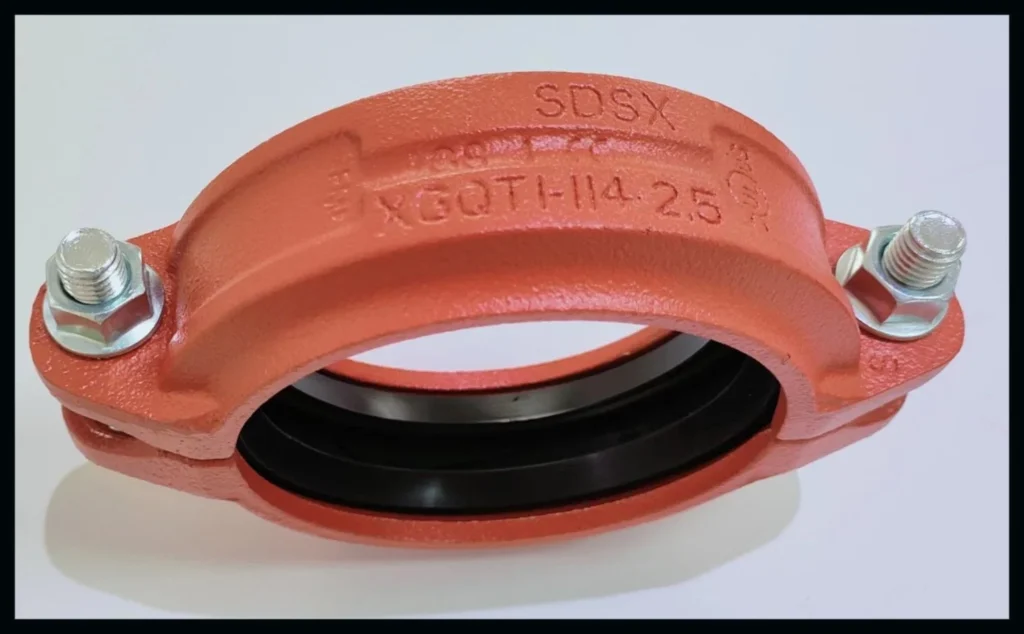Now we provide a comprehensive guide to understanding these couplings, including their features, benefits, and examples of their usage. Whether you’re involved in plumbing, HVAC, or industrial piping systems, knowing the different types of grooved flexible couplings will help you make informed decisions and optimize your projects.
Type 1: Rigid Couplings
Rigid couplings are the most basic type of grooved flexible coupling. Key features include:
- Sturdy Construction:
Rigid couplings are designed to provide a rigid connection between pipes, ensuring stability and alignment. - Applications:
They are popular in straight pipe runs where no movement or flexibility is required, such as in water distribution systems or industrial applications.
Type 2: Grooved Flexible Couplings
Grooved Flexible couplings offer more flexibility compared to rigid couplings. Key features include:
- Flexibility and Movement Absorption:
Designed with a flexible element, these couplings can accommodate axial, angular, and lateral movement, reducing stress on the piping system. - Applications:
Flexible couplings are suitable for applications where thermal expansion, vibration, or seismic activity is expected, such as in HVAC systems, fire protection, or wastewater treatment plants.
Type 3: Expansion Joints
Expansion joints provide the highest level of flexibility among grooved flexible couplings. Key features include:
- Multi-Axial Movement:
Expansion joints can accommodate axial, angular, lateral, and torsional movements, making them ideal for complex piping systems. - Applications:
They play an important role in large-scale projects that involve high levels of movement, such as power generation facilities, chemical plants, or offshore installations.
Real-World Examples
Explore the application of couplings in different industries:
- Plumbing and Water Distribution:
Rigid couplings are commonly used for straight pipe runs, while flexible couplings and expansion joints are used in areas prone to movement or vibration, such as underground piping or pump stations. - HVAC Systems:
Flexible couplings provide the necessary flexibility to accommodate thermal expansion and contraction in HVAC systems, ensuring efficient and reliable operation.

Conclusion:
Understanding the three types of grooved flexible couplings—rigid couplings, flexible couplings, and expansion joints—empowers you to make informed decisions when it comes to selecting the right coupling for your project. Whether it’s a plumbing system, HVAC installation, or industrial piping network, these flexible couplings offer the necessary versatility and reliability to optimize your system’s performance.

